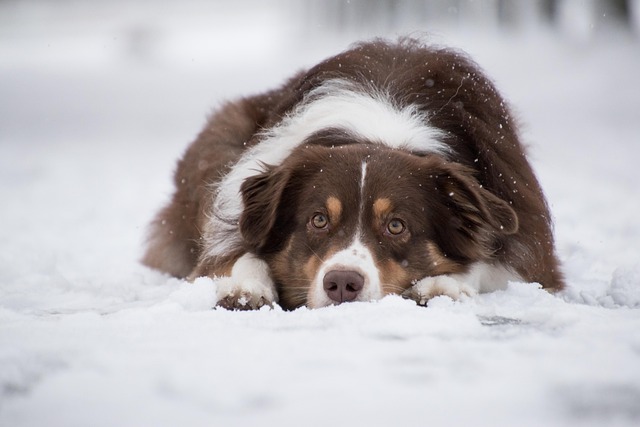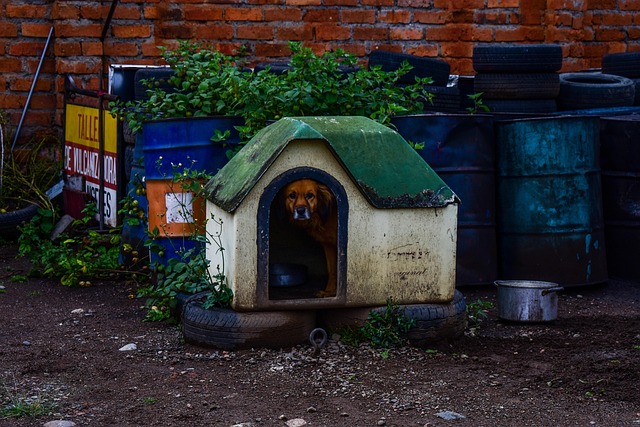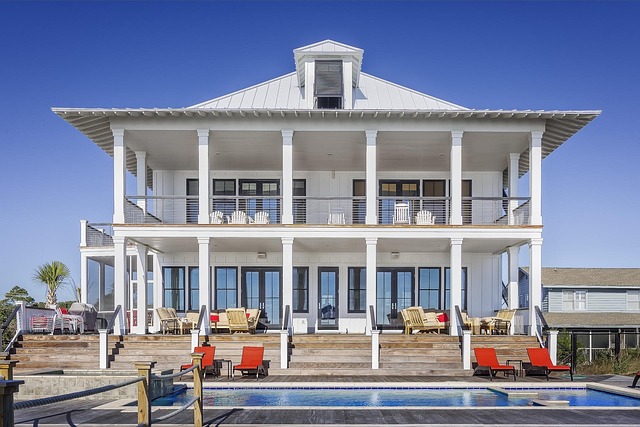Heated dog houses provide warmth and comfort for pets in cold weather, using various heating mechanisms like electric heaters, solar panels, and thermal blankets with thermostat control for energy efficiency. Modern designs are portable and easy to use, with insulated walls and roofs for heat retention and weatherproof construction for all climates. Ideal for elderly dogs or those with reduced circulation, these houses promote pet safety and comfort while reducing energy consumption through eco-friendly options. Installation is simple, requiring proper ventilation and regular cleaning; safety features like automatic shut-off and overheat protection ensure well-being throughout the year.
Keeping your furry companion cozy during chilly weather is every pet owner’s concern. Heated dog houses offer a solution for dogs who struggle with cold temperatures, providing them with a warm sanctuary. In this article, we’ll guide you through the world of heated dog houses, from understanding their basic concept to exploring their numerous advantages. We’ll break down how these innovations work, help you choose the perfect fit, and provide essential tips for installation and maintenance.
- What Are Heated Dog Houses?
- How Do They Work?
- Benefits for Dogs in Cold Weather
- Choosing the Right Heated Dog House
- Installation and Maintenance Tips
- Safety Precautions and Considerations
What Are Heated Dog Houses?

A heated dog house is a specialized structure designed to provide additional warmth and comfort for dogs during cold weather. Unlike traditional dog houses that rely solely on insulation, heated dog houses incorporate heating elements that maintain a consistent, comfortable temperature. These houses can be standalone structures or attached to existing dog houses, offering both indoor and outdoor options for pets. The primary goal is to ensure dogs have a safe haven where they can retreat from the harsh elements, keeping them cozy and happy year-round.
Heated dog houses work by utilizing various heating mechanisms, such as electric heaters, heat pads, or even eco-friendly alternatives like solar panels and thermal blankets. Many models feature thermostat control, allowing owners to set and maintain optimal temperatures. This ensures consistent warmth without excessive energy consumption. With modern designs focusing on portability and ease of use, pet owners can easily bring their dog’s comfort level up a notch, no matter the climate or location.
How Do They Work?

Heated dog houses are designed to provide a cozy and comfortable living space for your furry companion during cold weather. They work by incorporating heating elements, typically electric heaters, into the structure. These heaters are strategically placed within the dog house to distribute heat evenly, ensuring every corner stays warm. The insulation, which is an essential feature of these houses, plays a crucial role in retained heat. The insulated for retained heat design prevents heat loss, keeping the interior temperature consistent even when external conditions are harsh.
A weatherproof design is another critical aspect, making sure that these dog houses can withstand various weather conditions without losing their heating efficiency. This feature ensures your pet stays warm not just in cold climates but also during unexpected drops in temperature. The overall comfort and safety of the dog house are enhanced by this dual functionality, providing warmth in cold climates.
Benefits for Dogs in Cold Weather

Dogs, despite their fluffy coats, can still experience discomfort and health issues during cold weather. A heated dog house provides a cozy sanctuary, mitigating the harsh effects of low temperatures. One of the primary benefits is maintaining a consistent warm temperature, which is crucial for elderly dogs or those with reduced circulation. This is especially beneficial in regions with prolonged winter seasons, ensuring your pet doesn’t shiver and stay active year-round.
Additionally, these dog houses offer energy-efficient heating solutions, allowing owners to control the environment effectively. With thermostat control, you can set optimal temperatures, preventing overheating while still providing warmth during colder spells. This feature not only promotes comfort but also contributes to eco-friendly practices, as it reduces energy consumption compared to traditional heating methods.
Choosing the Right Heated Dog House

Choosing the Right Heated Dog House
Selecting a heated dog house involves considering several factors to ensure it meets your pet’s needs effectively. The first step is assessing your climate and environmental conditions. If you live in an area with extreme cold, look for models designed to retain heat optimally, featuring insulated walls and roofs insulated for retained heat. These features prevent heat loss, keeping the interior warm and cozy. Additionally, consider the size of your dog(s) and their activity levels; larger dogs might require a spacious house that allows them to move around comfortably while staying warm.
When exploring options, don’t overlook the availability of both indoor and outdoor indoor & outdoor options. Indoor heated houses offer convenience during harsh weather, while outdoor ones provide year-round access to shelter for your dog. Lastly, for eco-conscious owners, there are now eco-friendly heating choices available, using renewable energy sources that reduce environmental impact. These options not only benefit your pet but also contribute to a more sustainable lifestyle.
Installation and Maintenance Tips

Installing a heated dog house is a straightforward process, typically involving securing it to the ground or a deck with included hardware. Before setting up, ensure your chosen location offers adequate ventilation to prevent the buildup of excessive heat and humidity. Regular cleaning is also essential; wipe down the interior and exterior surfaces regularly with mild soap and water to maintain hygiene and prolong the life of the house.
For optimal performance, consider using heated dog houses with safety-certified heating elements designed for indoor and outdoor use. These elements provide portable warmth without the risks associated with traditional heaters. While initial installation might take a few minutes, ongoing maintenance is minimal, allowing you to focus on your furry companion’s comfort while enjoying peace of mind throughout the colder months.
Safety Precautions and Considerations

When considering a heated dog house, safety should be your primary concern. It’s crucial to choose models that are designed with safety in mind, featuring features like automatic shut-off mechanisms and overheat protection. Ensure the unit is properly insulated for retained heat, using materials that won’t conduct cold effectively, thus maintaining a cozy environment even during extended power outages. Moreover, an energy-efficient heating system not only conserves resources but also minimizes fire risk by reducing the chance of overheating. The dog house should have a weatherproof design to withstand harsh elements, from heavy rain and snow to strong winds, guaranteeing your pet’s safety and comfort year-round. Remember, proper ventilation is also essential; well-designed models allow for adequate airflow to prevent carbon monoxide buildup and ensure optimal air quality inside the shelter.
